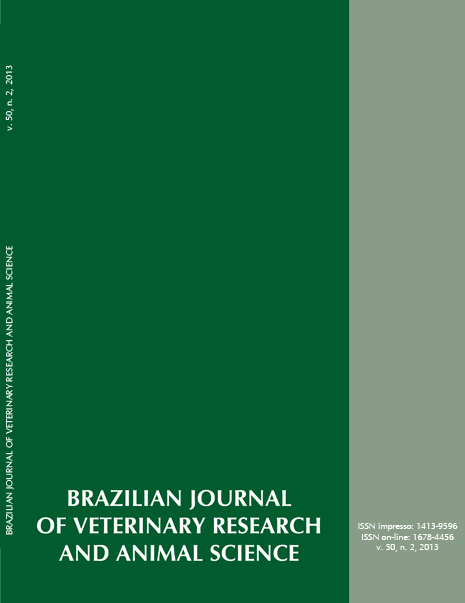Prevalence and geographical distribution of Toxoplasma gondii in dogs in the urban area of Botucatu, SP, Brazil
DOI:
https://doi.org/10.11606/issn.2318-3659.v50i2p152-155Keywords:
Dogs, Toxoplasma gondii, Spatial distributionAbstract
Toxoplasmosis is a worldwide zoonosis caused by Toxoplasma gondii, and can infect a wide variety of animals including humans. Domestic animals can be an important sentinel population for infection in the community. Occurrence of T. gondii infection was assessed in dogs in the urban area of Botucatu city, SP, Brazil. In the sample, 10% rate for error estimate, 95% confidence interval, and 5% significance level were established. Serum samples were collected from dogs during a rabies vaccination campaign, and were processed using modified agglutination test (MAT). Blood samples were collected from 670 dogs, with homogeneous distribution in five regions in the urban area, representing 3.74% of 17,910 animals vaccinated. In this sample, 17.3% (116/670) dogs (68 – 58.6% female and 48 – 41.4% male) were positive for T. gondii infection (p<0.03). Regarding age of the infected dogs 4.6% (4/88) were younger and 95.4% (84/88) were older than one year (p<0.01); the age of 28 positive animals were undetermined. The serum titers of anti-T. gondii antibodies were: 16 (69.8%; 81/116), 64 (13.8%; 16/116), 256 (15.5%; 18/116), and 1024 (0.9%; 1/116). Prevalence was distributed among the North 14.2% (19/134), South 18.0% (31/172), East 15.7% (19/121), West 21.6% (27/125), and Central 16.9% (20/118) regions of the municipality (p=0.5). In all these regions, females and dogs aged more than one year showed a higher occurrence of T. gondii infection (p<0.05).
Downloads
Downloads
Published
Issue
Section
License
The journal content is authorized under the Creative Commons BY-NC-SA license (summary of the license: https://





